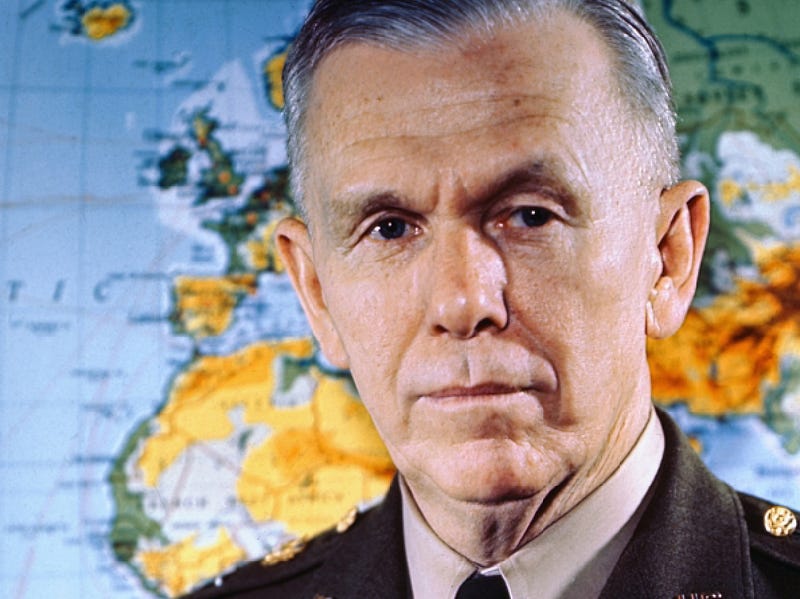Leadership Lessons Drawn from the Past
To sharpen your focus, think historically.

Henry Kissinger once said, “The problem in Washington is that the smart people are going after the urgent issues, not the important ones.”
Distraction, argues Professor Jeremi Suri, is what diverts leaders away from their priorities as they drift from crisis to crisis, rarely moving forward toward a larger goal. Distraction undermines strategy.
“If you think strategically, you have to say something is less important than something else. If you think strategically, you have to say what no president wants to say, which is, ‘I’m sorry you’re suffering, but there’s nothing I can do about it.’”
Suri, who holds a joint appointment at the Lyndon B. Johnson School of Public Affairs and the Department of History at The University of Texas at Austin, spoke at a gathering sponsored by McCombs School of Business about transforming leadership in a complex and uncertain world.
“Every president wants to come and feel your pain and to make you feel better, and that’s a legitimate humanitarian impulse. That’s not a bad thing,” continues Suri. “But it’s not leadership; it’s drift.”
What sets the best leaders apart — from American presidents to CEOs to team directors — is their ability to identify priorities, maintain a strategic focus, and avoid distraction. But Suri cautions, “It’s really hard to do this. My studies would indicate that 95 percent of really good leaders don’t do this… [However,] the one necessary way to begin to do this is to learn to think historically.”
Situating Your Organization
Perhaps the greatest speech in American history was delivered on March 4, 1865. Despite weeks of rain that had left Pennsylvania Avenue steeped in mud and standing water, crowds gathered to listen to Abraham Lincoln’s second inaugural address. His remarks were brief, forthright, and solemn — not only about a unified future he aspired to attain but also about a past he felt certain had been America’s to endure.
The Civil War, he remarked, was “the woe due to those by whom the offense [of slavery] came,” and it was a penance shared equally between the North and South.
Lincoln’s address provides the necessary context to understand what the country had faced and where the nation was headed. He identifies the country’s present course — to finish the war — with the larger mission of reunification.
“What Lincoln is doing there,” explains Suri, “what he buys you into, is a historical argument about the Civil War. He’s not claiming victory. He’s not saying ‘I’m right, you’re wrong’… He’s instead saying we have a history of a terrible scourge — slavery — and terrible things have happened… We have all been part of this… And he turns it into leverage for a new union.”
Lincoln led a country not to war, but through war. His mission was not only a unified country but also a unified spirit:
“With malice toward none, with charity for all, with firmness in the right as God gives us to see the right, let us strive on to finish the work we are in, to bind up the nation’s wounds, to care for him who shall have borne the battle and for his widow and his orphan, to do all which may achieve and cherish a just and lasting peace among ourselves and with all nations. “— Abraham Lincoln, 1865
Assessing Opportunities
Strategic leaders provide context — where are we, and where have we been? — and then they evaluate their options. But as Suri points out, opportunities are not the same as preferences, and this often means making very hard decisions.
“George Marshall was given, by FDR, a task more difficult than anyone in this room has ever faced: He was told in late 1941, we’ve got to figure out how to fight the Germans and the Japanese… and you have to do it in a way that helps the economy at home and maintains basic domestic freedoms.”
Good judgment often comes from asking good questions, and to find a solution to the escalating crisis at home and abroad, Marshall, chief of staff of the U.S. Army during World War II, asked these:
- What is the landscape of change?
- Where am I located in the landscape?
- What are my options?
- What do I really care about?
- How do I maximize my priorities?
- How do I “avoid trivia”?

“This is what Marshall did,” Suri explains, “and what he realized very quickly was that in the short-run, the United States was not ready to take on the enemy.” He was advised to go after Germany and Japan directly, but Marshall said the landscape of change didn’t allow that. At the time, the Nazis had more soldiers fighting in Russia than the U.S. had in its entire Army. The landscape was clear: The U.S. did not have an immediate advantage. Where the U.S. did have an advantage was in materials, and as such, Marshall chose to fight a long war of attrition until the opposition ran out of supplies.
This was not an easy path to follow because a long war had several consequences, one of which was sacrificing goods and food at home in order to send rations and munitions abroad to the Allied forces. But perhaps the hardest consequence to accept was the choice not to end the Holocaust sooner.
Suri clarifies, “It’s always a question: Why didn’t they try to stop the Holocaust? Many of us, including myself, lost relatives in this. It’s not that they didn’t care or that they didn’t know… It wasn’t what they really cared about. They cared about winning the war and defeating the threatening entities.”
Marshall’s strategic decision to fight a long war took advantage of America’s strengths and was the nation’s best opportunity for success.
Avoiding Distractions
Once strategic leaders identify their priorities and assess the best options for achieving their goals, they refuse to get distracted by less important issues.
Henry Kissinger advised politicians from Rockefeller to Obama because of his ability to separate the urgent from the important. He served both as national security advisor and secretary of state, but Kissinger’s unwavering focus on issues of strategic importance stems less from his time in the Oval Office and more from his personal experience fleeing Nazi-occupied Germany as a teenager in 1938. He saw firsthand how distraction and fear could weaken a nation and provide a foothold for those who would seek to sabotage democracy.
“Kissinger makes a strategic judgment — a historical judgment — that democracy is good but that democracy is inherently weak. And that democracy must — must — have leaders in place who are willing to make tough judgments to protect the basic rule of law,” says Suri, who has authored a book about the circumstances that shaped Kissinger’s worldview and influenced his approach to international policy.
For Kissinger, the Germans’ lack of resistance against the Nazis produced in him a singular focus to strengthen democracy that people still value today. “And why?” asks Suri. “What is it he brings? For better and for worse — it doesn’t mean his advice is always good; as I point out in my book, it’s as bad as it is good — but what he brings is a strategic focus that people rarely hear.”
What these leaders have in common is an ability to keep the ball moving forward. They observe their environments, identify priorities, and doggedly pursue their goals. And at every turn, they look back to remember from where it is they have come.
Suri concludes, “Thinking historically allows us to put problems together — to see the broader issues — and I think that’s something all of us can do. You don’t have to be Abraham Lincoln or Henry Kissinger to do that… We can all do that in our organizations.”
Story by Adrienne Dawson
Watch Suri’s talk at a Texas Enterprise event on Feb. 27, 2014.
About this Post
Share:

